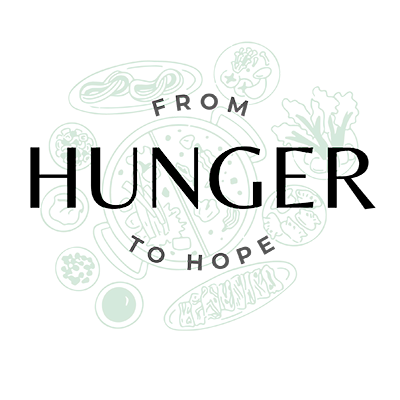Savings accounts are an accessible and popular way to save money, but misconceptions about them can lead to confusion and missed opportunities. Knowing the truth about savings accounts is essential to make informed financial decisions.
When it comes to savings accounts, it’s crucial to understand the options and features available and the limitations and restrictions that come with them. Unfortunately, not all the information circulating around savings accounts is true, and distinguishing fact from fiction can be challenging.
So, which of the following statements about savings accounts is false? In this article, I will debunk common myths and highlight the realities of savings accounts, empowering readers to manage their money effectively and efficiently.
Debunking Common Myths about Savings Accounts
When saving money, a savings account is often the go-to choice. However, there are a lot of misconceptions about savings accounts that people believe to be true. So let’s debunk some of these common myths.
Myth #1: All savings accounts are the same
Many believe that all savings accounts are the same, but this is untrue. Savings accounts can vary widely regarding interest rates, fees, and minimum balance requirements. Some savings accounts even offer bonuses or rewards for reaching certain savings goals. Therefore, shopping around and comparing options is important to find the savings account that best fits your needs.
Myth #2: You can’t withdraw money from a savings account
Another common myth is that you can’t withdraw money from a savings account. While it’s true that savings accounts typically have limits on the number of withdrawals you can make each month without incurring fees, you are still able to access your funds when you need them. One of the main benefits of a savings account is that it offers a safe and convenient place to store your money while allowing you to easily access it if needed.
Myth #3: Savings accounts don’t earn interest
Some people believe savings accounts don’t earn interest, but this is false. One of the primary reasons to open a savings account is to earn interest on your deposits. However, it’s important to note that not all savings accounts offer the same interest rates. So be sure to compare rates and choose a savings account that offers competitive interest rates to maximize your earnings.
Myth #4: Savings accounts are a risky investment
Finally, some people believe that savings accounts are risky, but this is not true. On the contrary, savings accounts are among the safest investments, typically FDIC-insured up to $250,000 per depositor. This means that your deposits would be protected even if the bank fails.
In conclusion, it’s important to separate fact from fiction regarding savings accounts. Remember that all savings accounts are not created equal, you can withdraw money when needed, savings accounts do earn interest, and they are a safe investment option. By understanding these common myths and the realities of savings accounts, you can make more informed decisions about your finances.
Misconceptions About Savings Account Interest Rates
One common misconception about savings accounts is that all accounts offer the same interest rate. This is false. Interest rates can vary greatly depending on the bank and the type of account. Even within the same bank, multiple savings accounts with different interest rates can exist.
Another misconception is that interest rates for savings accounts are fixed. This is also false. Banks can change the interest rates on savings accounts at any time for various reasons, such as changes in the economy or response to the actions of their competitors.
It’s also important to understand that the interest rate advertised by banks may not be the actual rate you’ll earn. For example, banks may advertise a higher interest rate for a limited time or with certain conditions, such as a minimum balance requirement. However, the interest rate you earn may be much lower. So it’s always a good idea to read the fine print and understand the actual interest rate you’ll receive.
Additionally, some people believe that they can only have one savings account. This is also false. You can have multiple savings accounts with different or even the same bank. Having multiple accounts can help you to meet different goals or to organize your finances in a way that makes sense for you.
In summary, there are many misconceptions about savings account interest rates. Interest rates vary greatly, are not necessarily fixed, and may differ from what is advertised. You can also have multiple savings accounts. As always, it’s important to research and read the fine print before opening any account.
Which Of The Following Statements About Savings Accounts Is False
When it comes to savings accounts, it’s important to have a clear understanding of the various associated features and fees. However, some misconceptions exist that people believe about savings accounts. In this section, I’ll fact-check a few statements about savings accounts, highlighting what’s true and false so you can make informed decisions about your finances.
Savings accounts always pay interest.
FALSE. While most savings accounts offer interest, not all of them do. Read the fine print before opening a new savings account to ensure it offers the interest rate you want.
There are no fees associated with savings accounts.
FALSE. Many savings accounts come with fees, such as maintenance fees or penalties for early withdrawals. Read the terms and conditions of your account carefully to understand what fees you may be charged.
Your money is always accessible in a savings account.
FALSE. Some savings accounts restrict how often you can withdraw money or limit the amount you can withdraw at once. Additionally, some accounts may require a waiting period before accessing newly deposited funds.
All savings accounts have the same interest rates.
FALSE. Interest rates can vary widely among different savings accounts, and even among accounts at the same bank. Shop for the best interest rates and terms for your savings goals.
A high interest rate always means a better savings account.
NOT NECESSARILY TRUE. While a high interest rate is certainly a plus, there may be other factors to consider when choosing a savings account. For example, some accounts may have higher fees or more withdrawal restrictions.
As you can see, there are some common misconceptions about savings accounts. Research and read the fine print to avoid unexpected fees or limitations on your savings account.
Conclusion: Understanding Savings Accounts for Better Financial Planning
Understanding the basics of savings accounts is essential for better financial planning. In this article, I’ve answered the question “which of the following statements about savings accounts is false?” so that you’re well-informed and able to make informed decisions about your finances.
Savings accounts are a popular vehicle for saving money for various reasons, including safety, liquidity, and predictable returns. First, however, a few common misconceptions about savings accounts should be dispelled to help you make informed decisions about your money.
Here are some key takeaways from our discussion:
- It is false that savings accounts always have high interest rates. While savings accounts can offer higher interest rates than checking accounts, they typically offer lower rates than other investment vehicles, such as stocks or bonds.
- Another false statement is that you can withdraw money from a savings account as often as possible without penalty. In truth, most savings accounts limit the number of withdrawals you can make each month and may charge fees if you exceed that limit.
- Finally, contrary to popular belief, not all savings accounts require a minimum balance. While some banks may impose minimum balance requirements to open the account or avoid fees, others offer no minimum balance accounts.
By understanding these misconceptions about savings accounts, you can better plan your finances and make informed choices about where to save your money. Remember, savings accounts are just one part of your overall financial picture, and it’s important to consider your goals, risk tolerance, and investment time horizon when deciding where to put your money.










